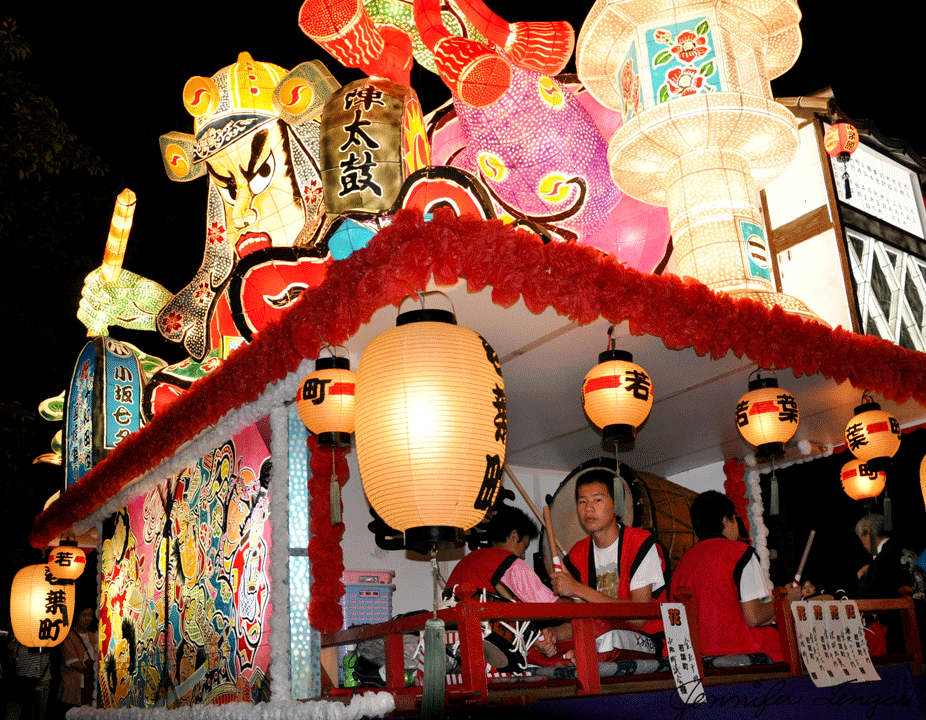
Aomori Nebuta Festival
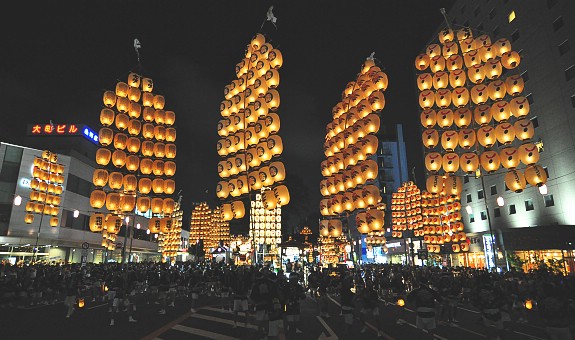
(courtesy japanguide)
Japan Today JUN. 29, 2014 By Mariko Sugimura
Since ancient times, Japan has had countless numbers of summer festivals which incorporate local traditional culture and customs. Here are some interesting festivals from around Japan.
Aomori Nebuta Festival
In the festival, 22 large “nebuta” floats featuring big lanterns and pictures of samurai parade along the street for about 3 kilometers. It often takes about three months to create a float. The year, the festival will be held Aug 2-7 in Aomori city
Akita Kanto Festival
Kanto Festival is one of the three big Tohoku festivals. The festival is held to ward off bad luck and mid-summer heat. The Kanto Festival originates from the Neburi Nagashi festival (Washing away sleepiness) which was already a tradition of Akita in the Horeki period (1751-64). It gradually changed to today’s format in which male performers balance huge bamboo poles of lanterns (kanto) that weigh 50 kilograms and are 12 meters tall on different parts of their bodies.” This year, the festival will be held Aug 3-6 in Akita city.
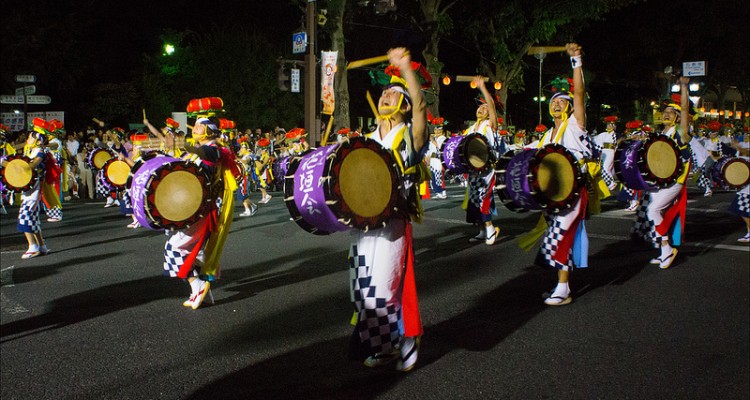
The Iwate Sansa Odori festival in Morioka (courtesy Japanismo)
Iwate Sansa Odori Dance Festival
The Sansa Odori Dance Festival is the world’s largest taiko drum parades. Local people dance and chant “Sansa! Sansa!” to chase away demons. The “Mitsuishi Legend” is said to be the origin of the festival. In ancient times, the demon Rasetsu threatened local people who people prayed to Mitsuishi Kami, a god, for help. Mitsuishi Kami caught Rasetsu and made him promise to never threaten people again by putting his hand print on the rock of Mitsuishi Shrine. This year, the festival will be held Aug 1-4 in Morioka city, Iwate Prefecture from 6 p.m. to 9 p.m.
GION Festival
Kyoto
One of the most famous festivals in Japan, it will be held July 1-31 in Yasaka shrine, Kyoto. This event was originally held to appease the gods and avert disasters such as floods, earthquakes and disease. This festival has been held every year since 970.
Hakata―
The Hakata Gion Yamakasa Festival has many stories about its origin, but the most common one is that it started in 1241, when an epidemic occurred and people sprinkled water as a cure. As with Kyoto, the event goes for the whole of July.
Narita― The Narita Gion Festival has a 300-year history, and is also held to pray for good luck and no disasters. Narita city will bustle with gorgeous floats and food wagons. The event will held July 5-7 in Narita city, Chiba.
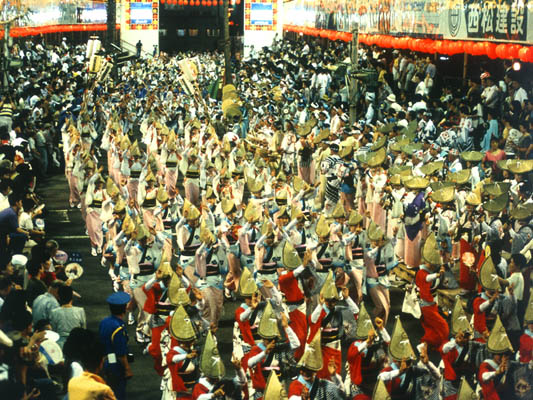
The Tokushima Awa Odori festival
Hiroshima Kangen Festival
The Kangen Festival is held in the World Heritage Itsukushima Shrine on Miyajima Island. This festival originated from an aristocratic event in the Heian era to perform music on boats to comfort the gods. This event will held on the evening of July 13.
Tokushima Awa-Odori Festival
With over 400 years of history, Awa-Odori is one of Japan’s most renowned festivals and one of the three big Bon Odori festivals. Over 1.5 million people visit from outside of Tokushima. The origin of this festival is vague, but it is said that after Tokushima Castle was constructed, people celebrated the accomplishment with dancing. During the Edo era, Awa-Odori was banned by Bakufu, because it was viewed as a peasant uprising. This year, the festival will be held Aug 12-15 in Tokushima city.
Kumamoto Hinokuni Festival
First held in 1978, over 5,000 people dance along a street in Kumamoto city to a famous Kumamoto folk song, “Otemoyan,” named after a woman. This year it will be held Aug 1-2.
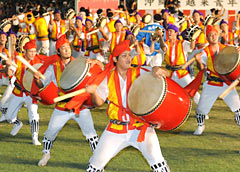
The Zento Eisa Festival in Okinawa (Ryukyu Shimpo)
Okinawa Eisa Festivals
Celebrating Okinawan music, dance and culture, the Eisa Festival has a long history, But according to Wikipedia, its modern origins date back to postwar Okinawa. In 1956, then under U.S. military occupation, the first Zento Eisa Contest was held in Koza (part of modern-day Okinawa city. It was originally an effort to recover from great damage to the base-dependent commercial city caused by the “Off Limits” ordinance of the U.S. military. As a contest, participating groups were judged by screening criteria such as costumes, formation, technique, the number of performers and innovation. The event will be Aug 15-17 this year in Okinawa-shi, Okinawa.
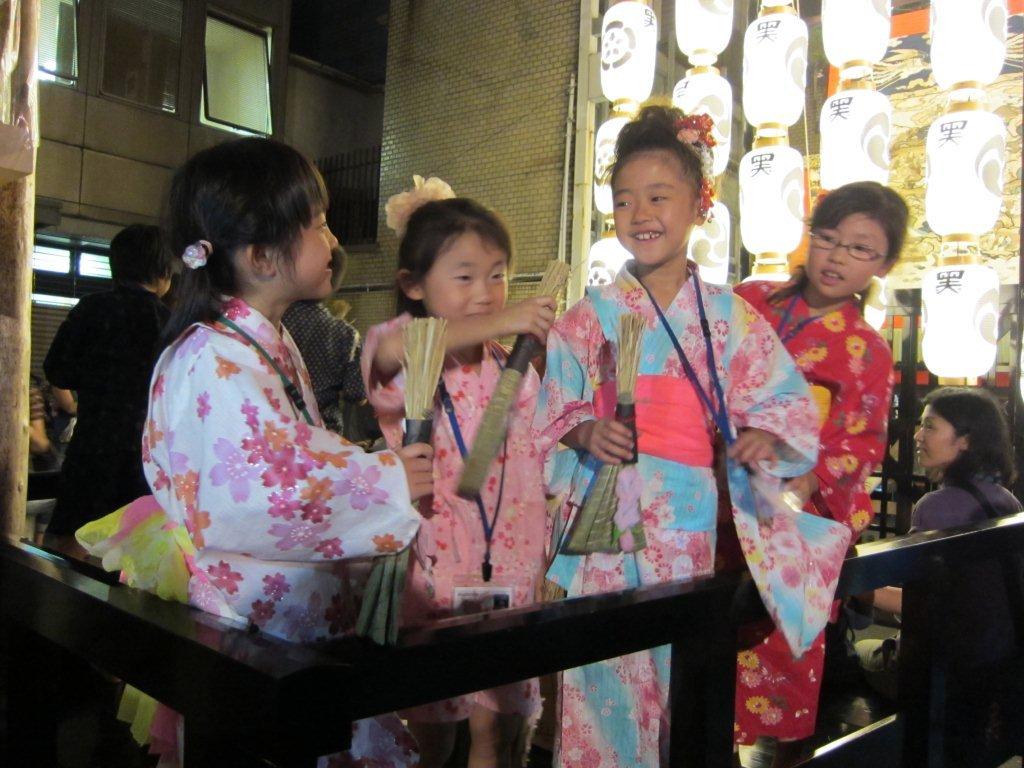
Children holding good luck charms sold at Kyoto's Gion Matsuri
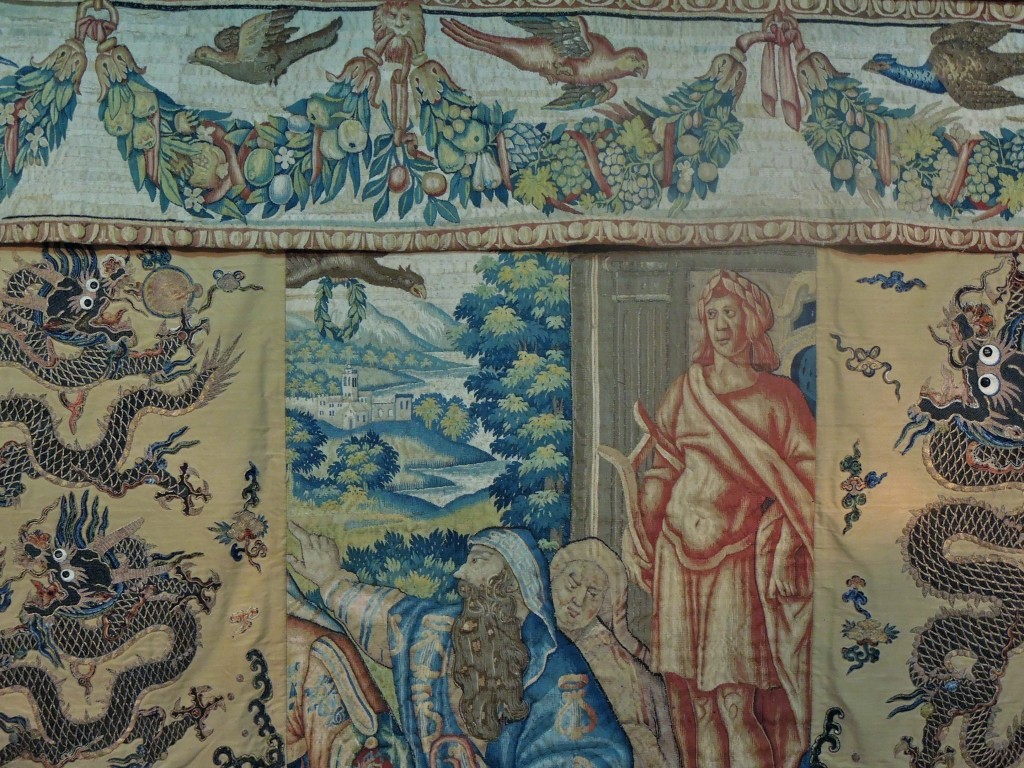
East meets West: one of the tapestries that adorn the floats at the Gion Festival, with a section imported to Japan by rich traders during the Warring States Period inserted in-between two oriental dragons.

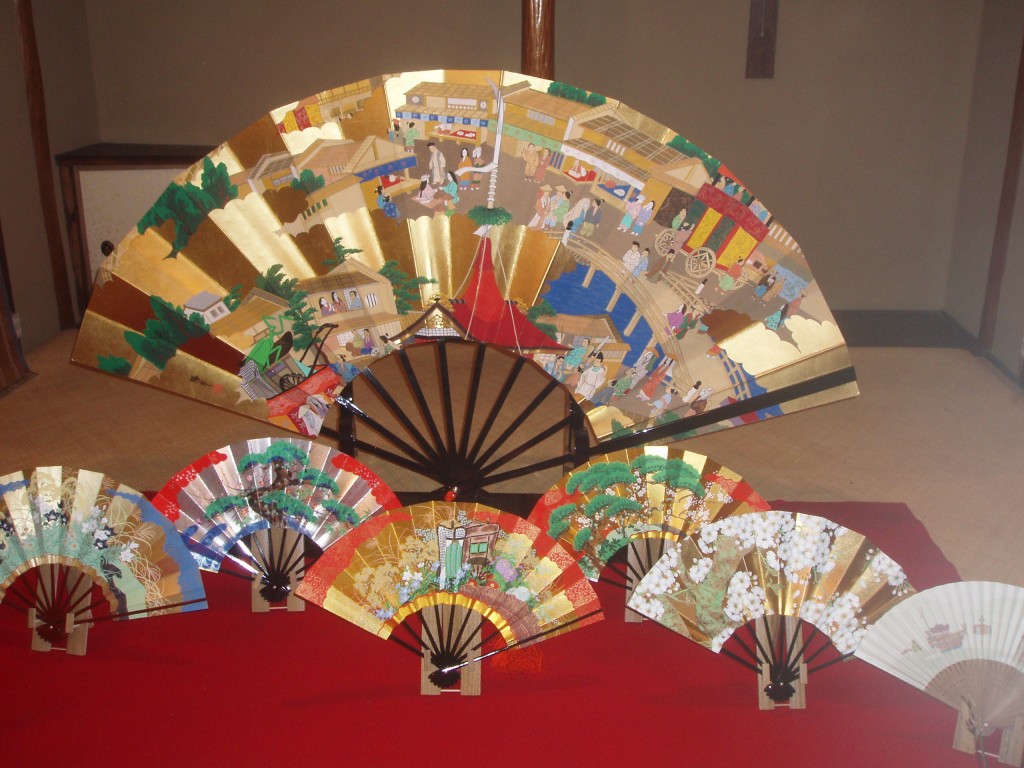
Leave a Reply